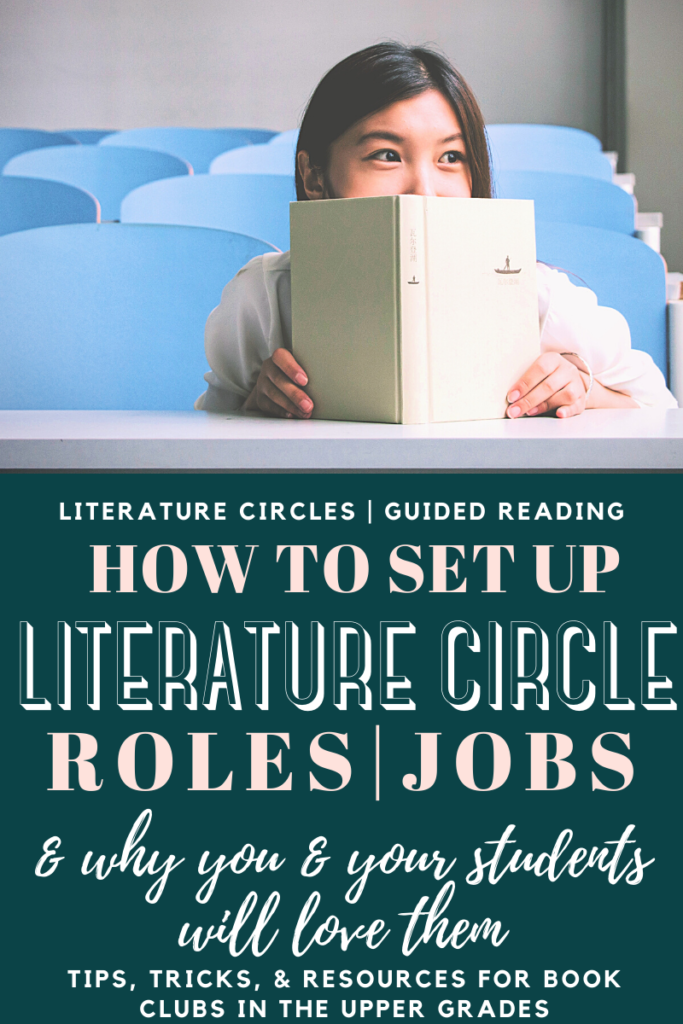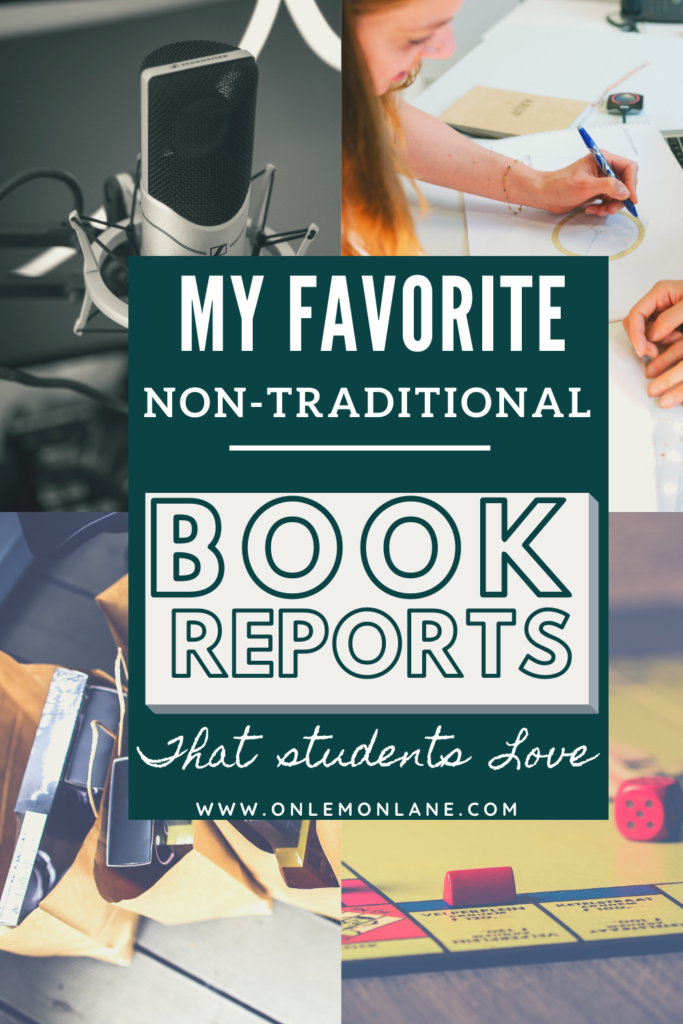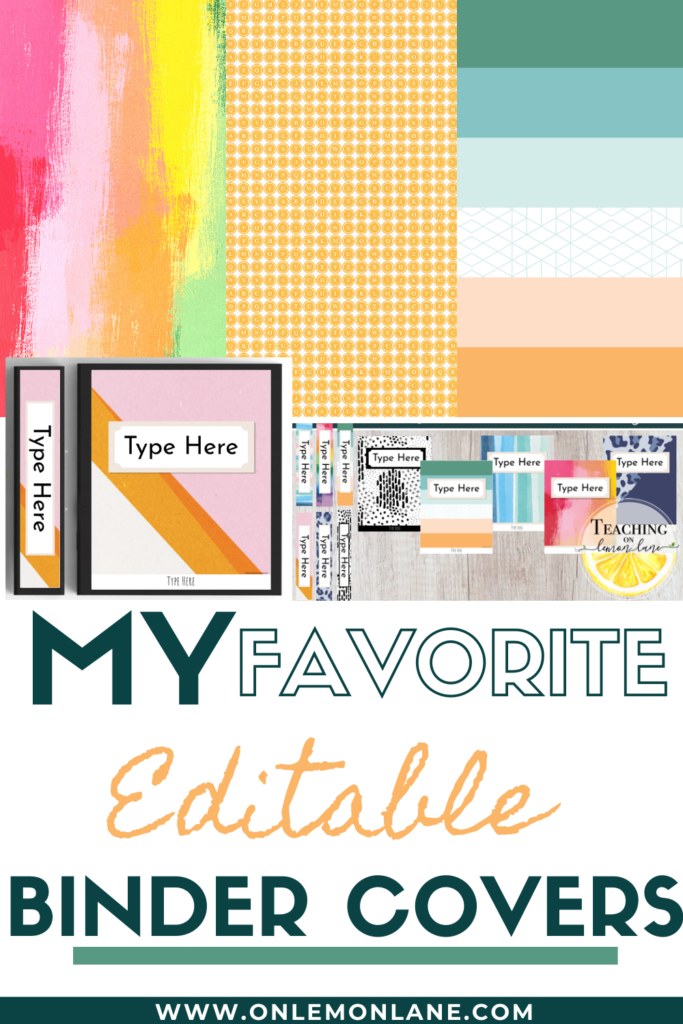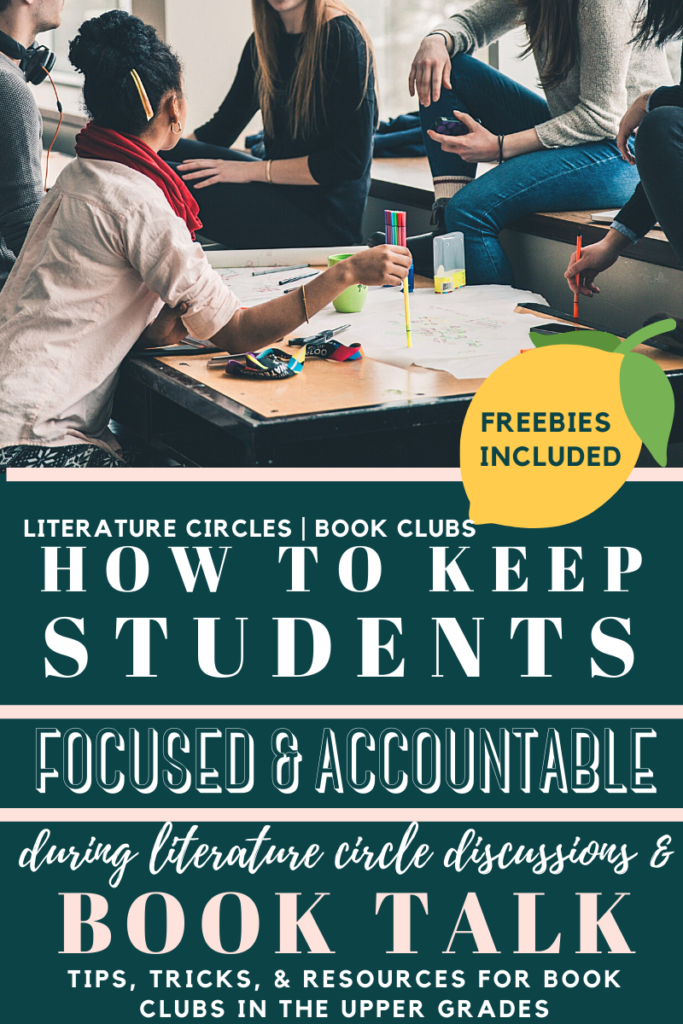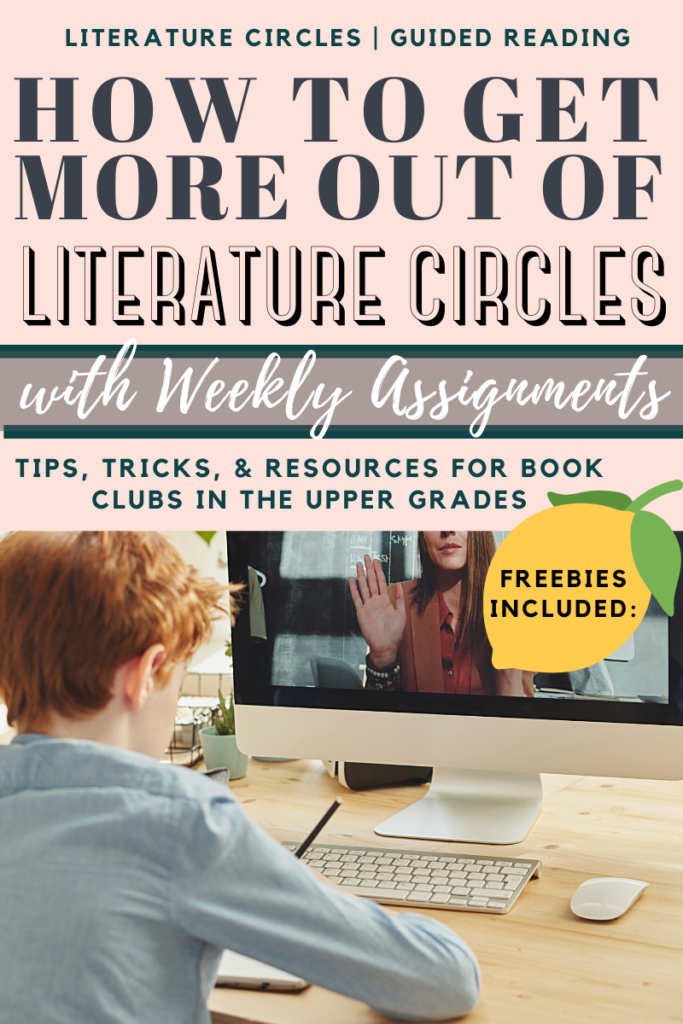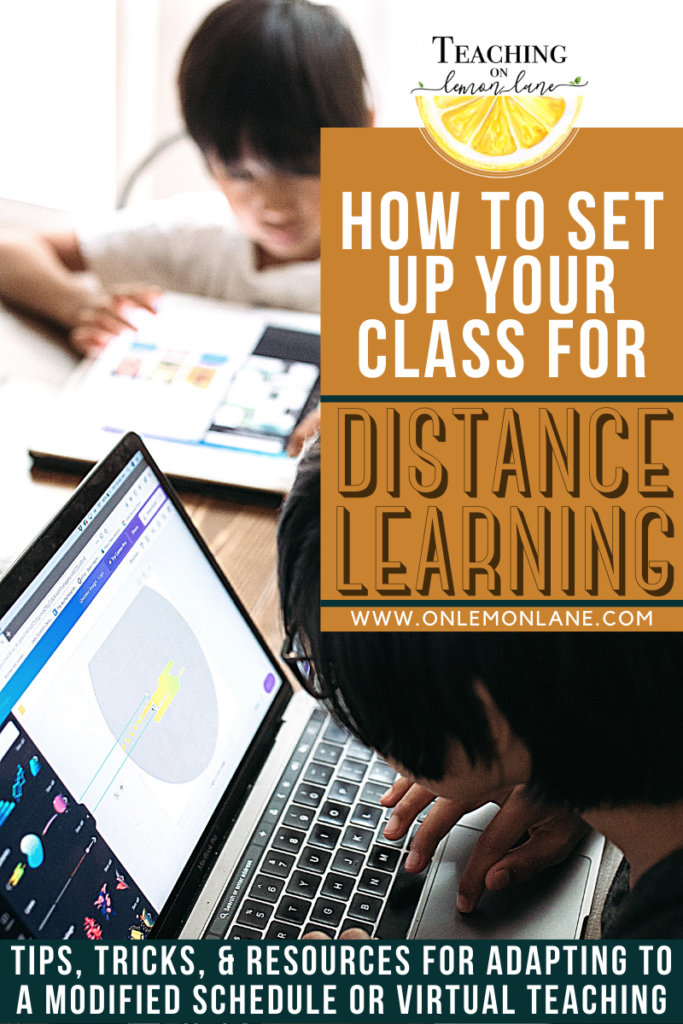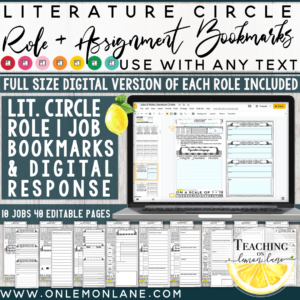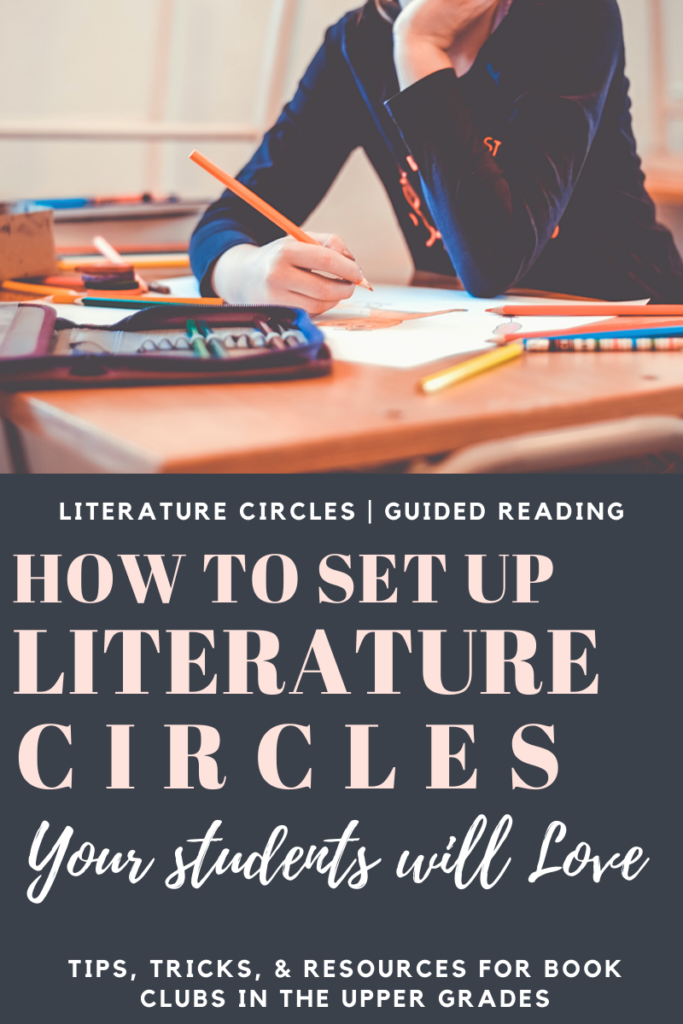
We all have something we do really well as a teacher, something we consider our niche… For me setting up Literature Circles and Guided Reading Rotations were just that. Literature Circles, in particular, can be such a powerful force for reading comprehension and motivation in the classroom. However, they are often set up without the support necessary or avoided altogether. Other times they are set up without any student choice in the matter and end up looking more like Guided Reading. To me, both are extremely important, but two completely different animals that both have their well-deserved place in the classroom.
Guided Reading is all about working with students at their instructional level while providing the scaffolding and support necessary for them to be successful. Then giving them the tools to apply that support and practice at an independent level.
Literature Circles to me are all about instilling a love of reading while fostering student choice and accountability in the classroom. Allowing students to have a choice in their own learning is power. Allowing students to discuss something they had a choice in with their peers is motivating.
By definition, Literature Circles are essentially when you divide students into smaller groups, I prefer 4-6 students per group. Each group is assigned the same piece of literature to read and is given time to meet, discuss, and explore the ideas and theme of their text. This is often why Literature Circles are also referred to as Book Clubs in the classroom.
Many people hold different philosophies when it comes to literature circles as to how much choice should be given in the matter. Do you abandon all structure and let your highest reader pick a book level below where they should be reading. Do you throw reason in the wind and let your lowest reader join book levels above where they are able to read independently? You will find a wide range of opinions all with strong reasoning on every part of the scale, myself, however, I would say I’m a moderate.
Because of the materials and resources, I use alongside my literature circle groups I feel confident that rigor is provided even if a student is in a literature circle group a few levels below my readers. I also see value in having that higher student in a book group leveled below them because of the depth and insight they can bring to the weekly discussion. It’s all about weighing out the pros and the cons, the biggest pro you can have in your corner is a student excited about a book and passionate about wanting to be included in that group.
The same goes for my lower students wanting to read a few levels above their independent level. I tend to be more warry of this and treat each case based on the individual student. You must take into consideration the novel in question, (typically fiction has a storyline easier to grasp as opposed to non-fiction.) I will also put it back on the student to ultimately decide by allowing them to read through the first chapter to determine their own comprehension. (If there are 3-5 words or more on a page they don’t know it may be best to pick a different book.
If I ever decline a student’s first choice of a book to read in literature circles, I also encourage them to check the book out at the library to be used as an independent read. The book tracker I have in their student planners was created for just this purpose!
The product line I’ve created to help you set up literature circles has been a labor of love. I created these for my own classroom and have fine-tuned them for yours. If you have tried literature circles in the past and swore them off for lack of structure or effectiveness… I urge you to try again. If you are a new teacher or have never tried to incorporate them up in your own classroom for simply not knowing where to begin, I urge you to try. I’ve created this product line with YOU in mind. I’ll walk you through the entire process and lend the tips and tricks I’ve learned along the way. I promise, when implemented correctly, you will never|not (I enjoy double negatives :D) do literature circles. I also promise that once you have your groups up and running they will begin to RUN themselves and provide you with materials, preparation, and experience you can rely on year after year.
My Guided Reading Groups and Literature Circle Groups work side by side, and hand in hand like a well-oiled machine, but that is a post for another day. Buckle up, lets jump into the nitty-gritty of what you need, and how to go about setting up Literature Circles in your classroom.
Literature Circle Organization & Set-Up Forms
This product includes everything you need to set-up & organize Literature Circles or Book Clubs in your classroom. These editable forms can be used digitally through your Google Drive or printed off and placed in a Literature Circle Binder. This is the perfect starting point for starting Literature Circles or Book Clubs in your classroom. Whether your students are in High School or 3rd Grade… These forms can work for you.
See Video Above for Full Product Preview:
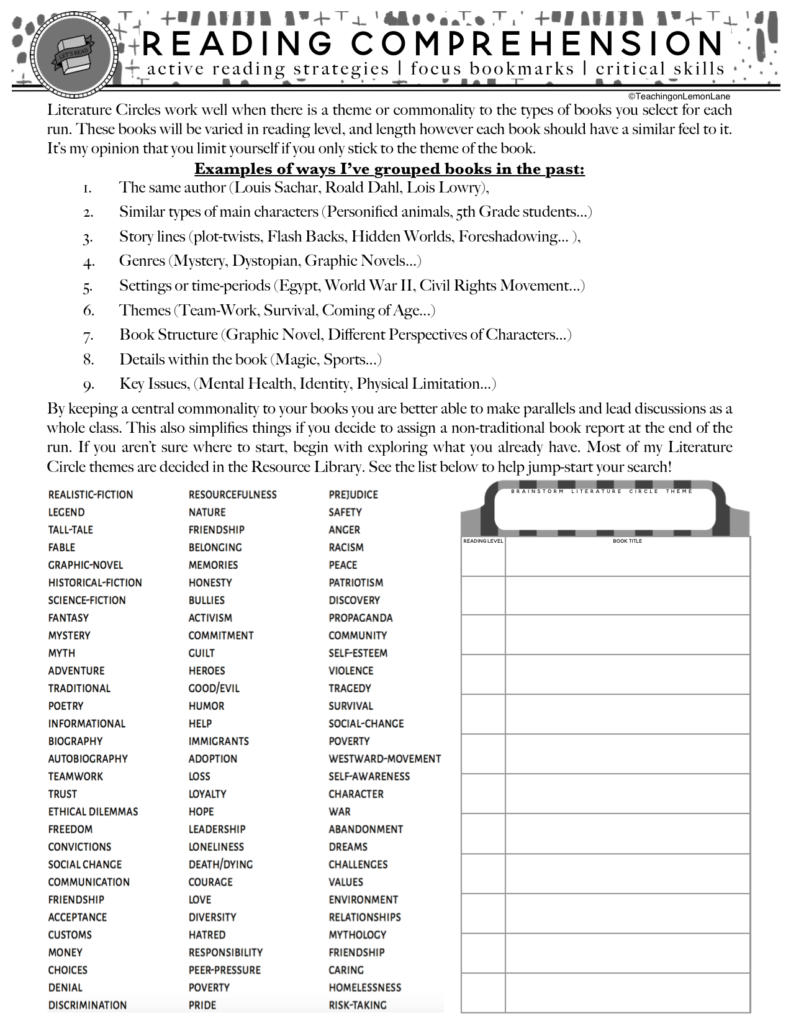
What’s Included:
Begin with this planning page. The first decision I make when it comes to setting up Literature Circles is how I am going to group my books. Literature Circles work well when there is a theme or commonality to the types of books you select for each run. These books will be varied in reading level, and length however each book should have a similar feel to it. It’s my opinion that you limit yourself if you only stick to the ACTUAL theme of the book.
Examples of ways I’ve grouped books in the past:
- The same author (Louis Sachar, Roald Dahl, Lois Lowry),
- Similar types of main characters (Personified animals, 5th Grade students…)
- Storylines (plot-twists, Flash Backs, Hidden Worlds, Foreshadowing… ),
- Genres (Mystery, Dystopian, Graphic Novels…)
- Settings or time-periods (Egypt, World War II, Civil Rights Movement…)
- Themes (Team-Work, Survival, Coming of Age…)
- Book Structure (Graphic Novel, Different Perspectives of Characters…)
- Details within the book (Magic, Sports…)
- Key Issues, (Mental Health, Identity, Physical Limitation…)
By keeping a central commonality to your books you are better able to make parallels and lead discussions as a whole class, despite students reading different books at the same time! This also simplifies things if you decide to assign a non-traditional book report at the end of the literature circle run. If you aren’t sure where to start, begin by exploring what you already have. Most of my Literature Circle themes are decided in the Resource Library.
The planning page also includes a large list of additional ideas to help you brainstorm how you could group books together. Use the list area to write down book titles, and their reading level that all work within the theme. I may grab as many as 10 books, even though I typically only use 6 books within each literature circle run. The additional books are provided simply to foster student choice.
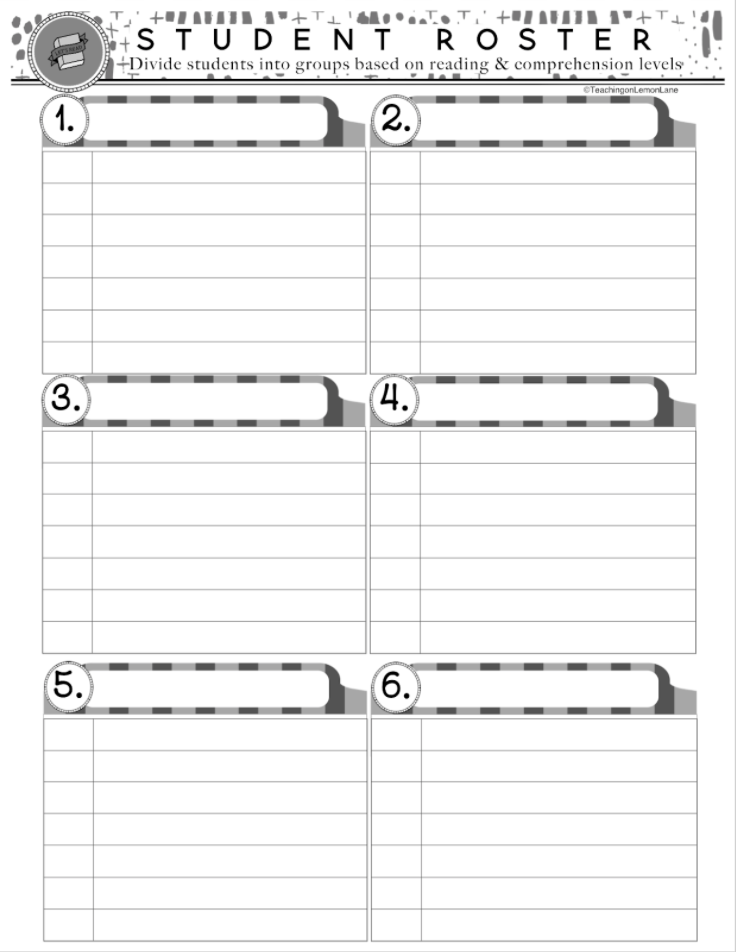 The following page helps you keep track of the next thing you need to keep in mind when determining which books you will provide as a choice to your students. The Student Roster page is where you will group your students based on their reading level. These are the same groups I use for Guided Reading. Record your student’s names, as well as their independent reading level, and group them with students at a similar comprehension level. ***Remember, your literature circle groups will be based more on student choice, rather than on reading level, this list simply gives you a starting point for the range of leveled books you will provide to your students as a choice.
The following page helps you keep track of the next thing you need to keep in mind when determining which books you will provide as a choice to your students. The Student Roster page is where you will group your students based on their reading level. These are the same groups I use for Guided Reading. Record your student’s names, as well as their independent reading level, and group them with students at a similar comprehension level. ***Remember, your literature circle groups will be based more on student choice, rather than on reading level, this list simply gives you a starting point for the range of leveled books you will provide to your students as a choice.
Once you know your range of reading levels, head to your school’s resource library to determine which books will be provided as a choice, that all have a commonality amongst them.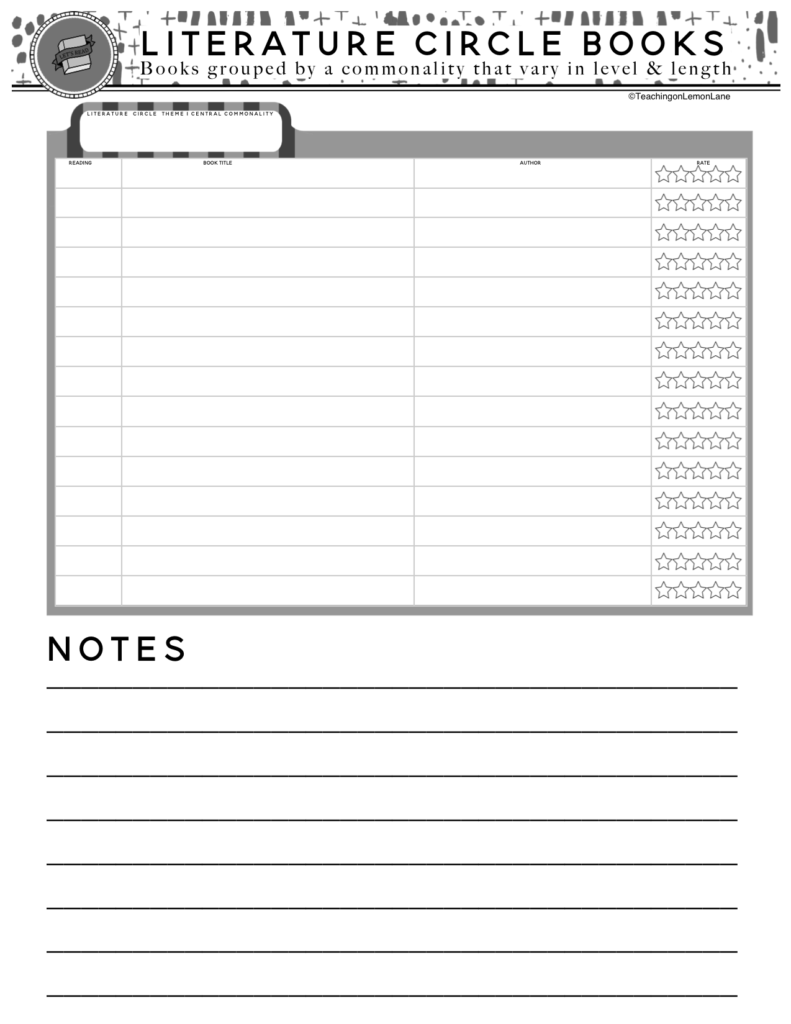
With reading levels in mind, I typically find books that are within my student’s independent reading level, as well as appropriate grade level materials. Based on my student’s needs I find books that meet the theme I have in mind as well as the level at which my students can read and comprehend. I aim to have around 8-10 books that fit this criteria, despite that I only end up using around 6 different titles for my Literature Circles.
The following page is where I keep a LONG list of books that fit the theme or commonality I have in mind for that particular Literature Circle. While you’re in the library you will likely do a lot of research. Keep track of what you find, this will be a great resource for you in years to come when students and levels change but your desire to implement literature circles does not! You will also notice the star rating system, after completing a book I’ll go back and give it stars based on how well it was received by the students. This helps me plan and prep for years to come.
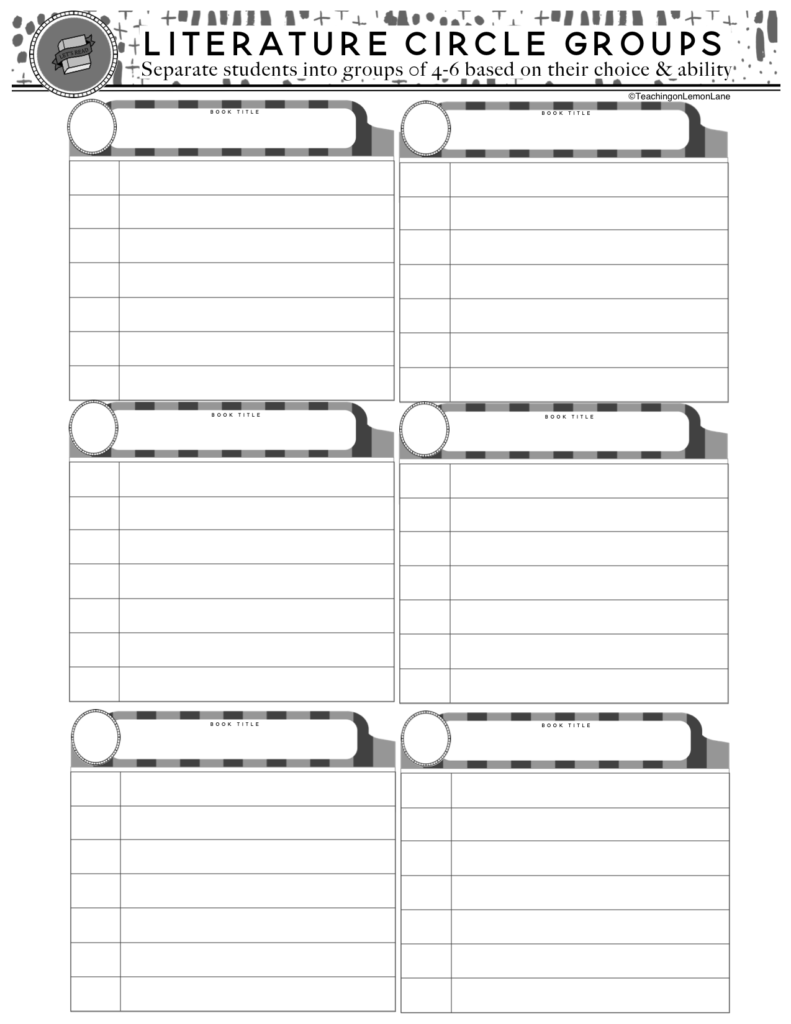 Once you’ve selected around 10 books for students to choose from, it’s time to let the student’s voice play its part. Before each Literature Circle Run, I do a “Book Walk” with the students. I place the multiple copies of the books at different parts of the classroom. Then silently I set the timer for 2 minutes. Students are broken into smaller groups and each group starts at a different book station. Students know they will have two minutes to silently explore each book. I encourage them to look at the cover, read the blurb, and try reading a page. I ask that they try and find their top 3 books of the choices provided. By finding their top 3 I can almost always guarantee that one of their top choices will be provided as a choice. ***If they notice multiple unknown words on a page they should consider opting for another book, I also ask them to notice the length of the book. We will all finish the books at the same time, so a thicker book means more reading for the week, with that in mind we start our silent book walk. When the groups of students have all had a chance at each station, students return to their seats and wait to be called back to pick their book.
Once you’ve selected around 10 books for students to choose from, it’s time to let the student’s voice play its part. Before each Literature Circle Run, I do a “Book Walk” with the students. I place the multiple copies of the books at different parts of the classroom. Then silently I set the timer for 2 minutes. Students are broken into smaller groups and each group starts at a different book station. Students know they will have two minutes to silently explore each book. I encourage them to look at the cover, read the blurb, and try reading a page. I ask that they try and find their top 3 books of the choices provided. By finding their top 3 I can almost always guarantee that one of their top choices will be provided as a choice. ***If they notice multiple unknown words on a page they should consider opting for another book, I also ask them to notice the length of the book. We will all finish the books at the same time, so a thicker book means more reading for the week, with that in mind we start our silent book walk. When the groups of students have all had a chance at each station, students return to their seats and wait to be called back to pick their book.
 At this point, I call students back based on the groups (4-6 students) found on the student roster page. Remember these groups are based on their independent reading level. Based on the reading level of my students determine the books I set out for them to choose from. I may have brought 10 different books for the book walk, but, especially with my lower students, I may only pull out 3 of those books for the students to choose from. Students take turns picking the book that interests them the most, and I record their name on the following page that now groups students by the book title selected instead of their reading level.
At this point, I call students back based on the groups (4-6 students) found on the student roster page. Remember these groups are based on their independent reading level. Based on the reading level of my students determine the books I set out for them to choose from. I may have brought 10 different books for the book walk, but, especially with my lower students, I may only pull out 3 of those books for the students to choose from. Students take turns picking the book that interests them the most, and I record their name on the following page that now groups students by the book title selected instead of their reading level.
Once only one of the copies of the book remains (Teacher Copy) or a group has as many as 6 students in it, the group is considered filled.
I continue to call back groups of students based on their reading level, and take into consideration which books I set out for the students to pick from. With some groups, I may only set out 3 books to pick from, while with others I may set out 7 options, consider the needs and abilities of your students. While doing this you will always have the occasional student not have their first choice set out as an option, if there is a vacancy in the group it is up to you as an educator to use your best judgment. ***If a student is concerned or upset their favorite book or their first choice for the literature circle wasn’t presented as a choice, encourage them to take down the book’s information and use it for an independent read. If you feel the motivation is there and with a little scaffolding the student will be successful with the book, allow them to try it, and provide the support necessary to aid their comprehension. You may have a higher student REALLY interested in a lower level read… Let them read it. ***To a point, within reason. They will add depth to the conversation and students in their group will benefit from their discussion. Successful Literature Circle groups are motivated by choice and built on accountability. There is power and motivation in student choice. Remember you should not end up with the same leveled groups you use in guided reading as you have for literature circles. Allow for student choice.
Literature Circles are NOT a replacement for Guided Reading. As mentioned before both hold an extremely important place in the classroom. Guided Reading is where students should work with your support at an instructional level. Here you challenge and introduce/teach skills to aid their comprehension. Literature Circles is where students have a safe place to try those skills and practices independently.
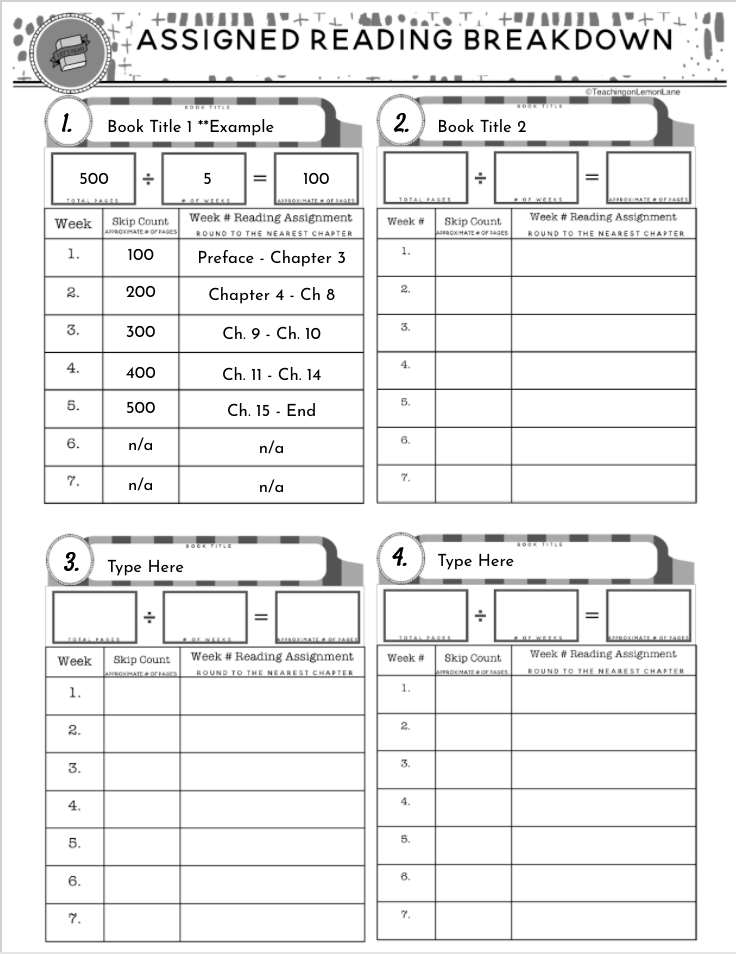 Once you have your students in their new groups based on book titles, you now need to calculate the weekly reading assignments. The following page helps you to calculate the weekly reading assignment for each book. Type or write the title of the book, then take the number of pages in the book, divide that by the number of weeks you would like your literature circle to run and this will give you the average number of pages students will be reading each week. I typically like my literature circles to run no longer than 5-6 weeks. ***I like to keep the assigned reading around 20-30 pages a week.
Once you have your students in their new groups based on book titles, you now need to calculate the weekly reading assignments. The following page helps you to calculate the weekly reading assignment for each book. Type or write the title of the book, then take the number of pages in the book, divide that by the number of weeks you would like your literature circle to run and this will give you the average number of pages students will be reading each week. I typically like my literature circles to run no longer than 5-6 weeks. ***I like to keep the assigned reading around 20-30 pages a week.
FYI: 5th graders and up are completely capable of doing these calculations…
Once you have the average number of pages students should be reading each week, take the book and skip count by the average number of pages. While skip counting I “round” to the nearest chapter, making sure each reading assignment concludes with the end of a chapter instead of in the middle of one. Sometimes this requires me to “Round” up a chapter, sometimes I “Round” down, by the end it typically all averages out. Use the skip-counting list on the page to try and get as close to that page number as you can each week to give a well rounded and balanced reading schedule. ***SAVE this page for years to come. Again this will save you valuable time and thought when it comes to implementing one of these specific titles, or groupings again.
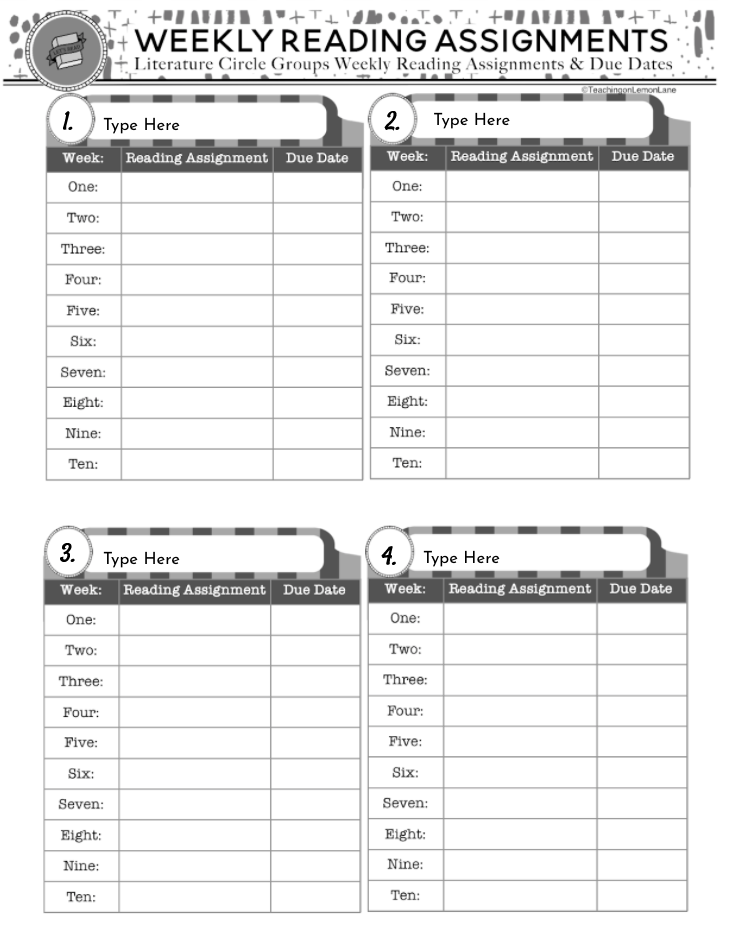
From there use the Weekly Reading Assignment Template to record your weekly Chapter reading assignments and their due dates.
Let’s talk about literature circle due dates. I like to have one consistent day and time a week devoted to literature circles. Based on my experience, Tuesdays and Wednesdays work best. Mondays are tough because oftentimes students forget over the weekend they had reading to do, and Mondays don’t allow any flex-time to complete the assignment. Thursdays and Fridays can be tough because often if there is an assembly or school break these days at the end of the week take a hit and can throw your reading schedule for a loop.
Pick a day and time that can be consistent. Let’s say for example’s sake, you pick Wednesday. So every Wednesday Literature Circles assignments and reading from the following week are due. On Wednesdays, students will meet with their groups and discuss what they’ve read, as well as be given a new weekly reading assignment. After group discussions, students head back to their desks and start reading the next chapter of their book while they wait to be called back to meet with me as a group to receive their new reading assignment.
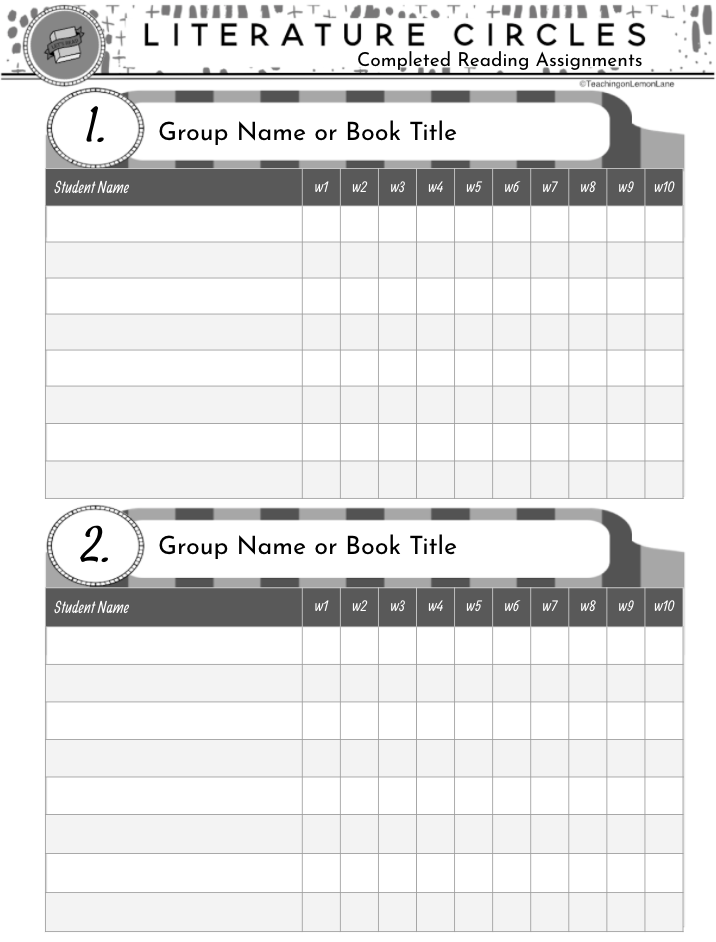 I like to allow around 45 minutes each week for Literature Circles. This gives me around 10 minutes for Group Discussion, (Keep reading to see how I keep group discussions focused and effective FREEBIE Included) and 35 minutes to meet with each group. If I have 6 groups this gives me about 6 minutes per group. Time to assign the new reading assignment and do one of the following: review the focus strategy for the week, read together, or discuss what they are reading! While I’m meeting with each group, students know this is the time to get a jump start on the new reading assignment for the week!
I like to allow around 45 minutes each week for Literature Circles. This gives me around 10 minutes for Group Discussion, (Keep reading to see how I keep group discussions focused and effective FREEBIE Included) and 35 minutes to meet with each group. If I have 6 groups this gives me about 6 minutes per group. Time to assign the new reading assignment and do one of the following: review the focus strategy for the week, read together, or discuss what they are reading! While I’m meeting with each group, students know this is the time to get a jump start on the new reading assignment for the week!
While meeting with the students I use this form to record which students completed the reading and assignment for the week. (Keep reading to see what I use for the weekly Literature Circle Assignments as well as the assigned reading FREEBIE Included)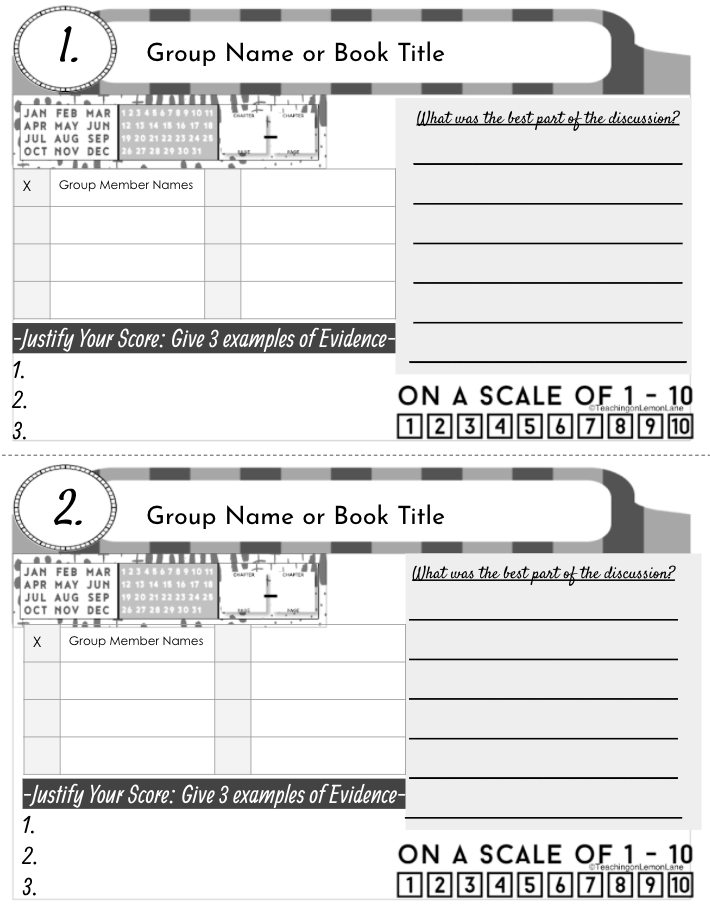
Also included in this download in the Literature Circle Discussion Reflection Sheet! This sheet can be used weekly and completed by each group. This is a great way to hold groups accountable for their discussion time. If I don’t use the reflection sheet, I always have each group agree on a score of 1-5 to give their group based on their discussion time. I “pretend” to record their group score, and if a group met and agreed upon the standard of a 5, I usually have a reward like out to recess a few minutes early, or a small treat to reward them for meeting that expectation! The beauty behind the Reflection sheet included in this download is that you can use it with individuals or as a group.
All of the forms above are editable through Google Drive and included in the Literature Circle Organization and Set-Up Forms. Keep reading for FREEBIES or use the link below to purchase!
Don’t forget, you can SAVE BIG by bundling. I’ve put together everything you need to set up an effective and efficient Literature Circle program in your classroom. Many of the products can be purchased individually, however when you purchase a bundle you can save as much as 20% – 50% on the product line! Keep reading to learn more!
Click Here to Purchase on Teachers Pay Teachers
Literature Circle FREEBIES
How to Keep Students Focused and Accountable During Literature Circle Discussions:
Like with anything in the classroom, if you give students “open time” with the instruction to talk, even if you want it to be about what they’ve read, this can be REALLY tough for students and instead of talking about the book, this open time often turns to chaos and results with a frustrated teacher. It’s tough to see the value in literature circles when this is happening. Especially, when this discussion time is meant to be the icing on the cake.
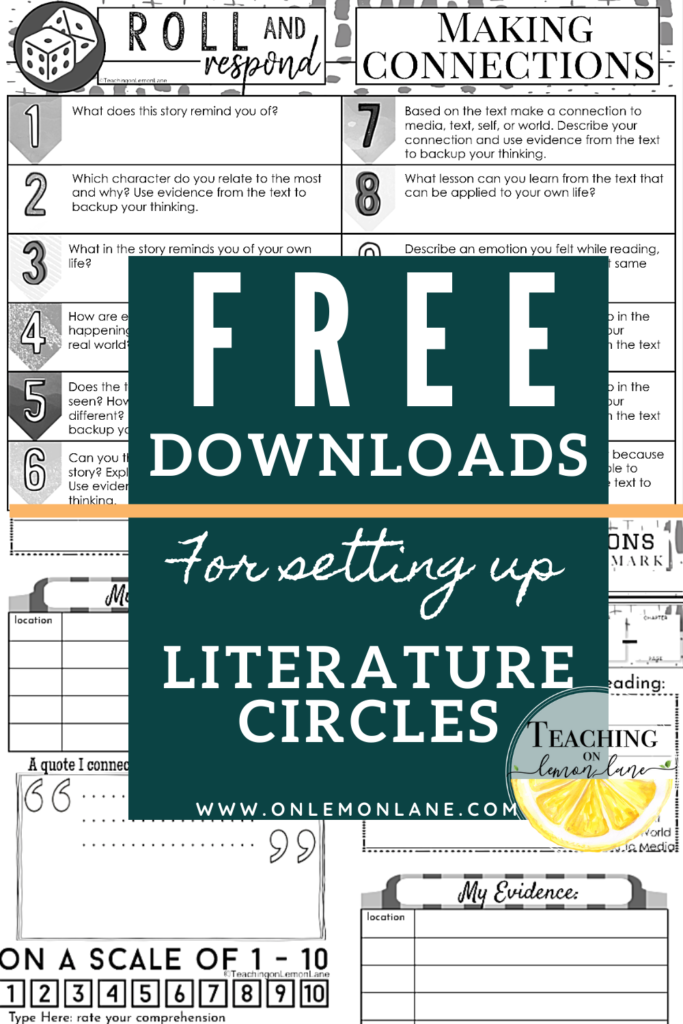 I came up with a system that worked really well for my students and their literature circle groups. I see real value in giving the students time to talk about WHATEVER they want, so long as it relates to the book. So I didn’t want to completely remove that time and freedom. Instead, I limited it. Group Discussions in my class begin with a few minutes to just talk. Depending on whether you are devoting 45 minutes or an hour to literature circles a week will determine how much time you can allot to group discussions. If students get off track or topic, we simply go into the next more structured segment of group discussion. I developed these “Roll and Respond,” sheets as a fun way for students to stay focused and to talk and think about the things I wanted them to. At the start of each discussion, students knew to grab a dice or two, along with the Roll and Respond Sheet for the week. After their “open talk” discussion students then take turns rolling a dice to see which question they will answer. I then set the timer for 2 minutes to give the students time to think of a thoughtful 30-second response backed with textual evidence. At the end of the SILENT PREP 2 minutes, students take turns sharing their question and a thought out response. I was blown away with the depth these Roll and Respond sheets added to the student’s discussion. It’s also funny to me how a bit of chance and the act of rolling a die changes a student’s attitude towards answering a question.
I came up with a system that worked really well for my students and their literature circle groups. I see real value in giving the students time to talk about WHATEVER they want, so long as it relates to the book. So I didn’t want to completely remove that time and freedom. Instead, I limited it. Group Discussions in my class begin with a few minutes to just talk. Depending on whether you are devoting 45 minutes or an hour to literature circles a week will determine how much time you can allot to group discussions. If students get off track or topic, we simply go into the next more structured segment of group discussion. I developed these “Roll and Respond,” sheets as a fun way for students to stay focused and to talk and think about the things I wanted them to. At the start of each discussion, students knew to grab a dice or two, along with the Roll and Respond Sheet for the week. After their “open talk” discussion students then take turns rolling a dice to see which question they will answer. I then set the timer for 2 minutes to give the students time to think of a thoughtful 30-second response backed with textual evidence. At the end of the SILENT PREP 2 minutes, students take turns sharing their question and a thought out response. I was blown away with the depth these Roll and Respond sheets added to the student’s discussion. It’s also funny to me how a bit of chance and the act of rolling a die changes a student’s attitude towards answering a question.
See the information below to try my Making Connections Focused Roll and Respond for FREE
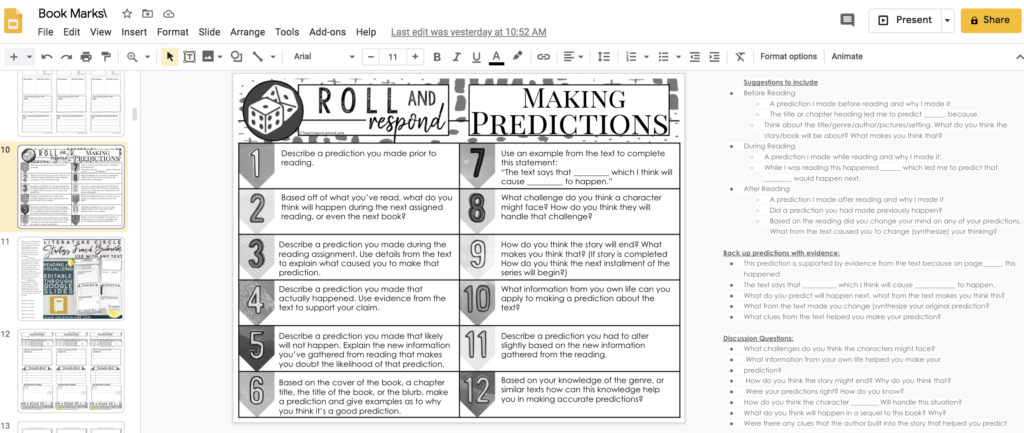
The text on the Roll and Respond Sheets is completely editable, so you can include more text-specific questions. I’ve also included a list of additional strategy focused questions that you can use to switch out with the original questions! Try out my Making Connections Roll & Respond Sheet for FREE. In order to access the download, you must be logged in. Not a member? Not a problem! Sign-up is FAST, FREE and Easy-Peasy Lemon Squeezy! Click here to become a member!
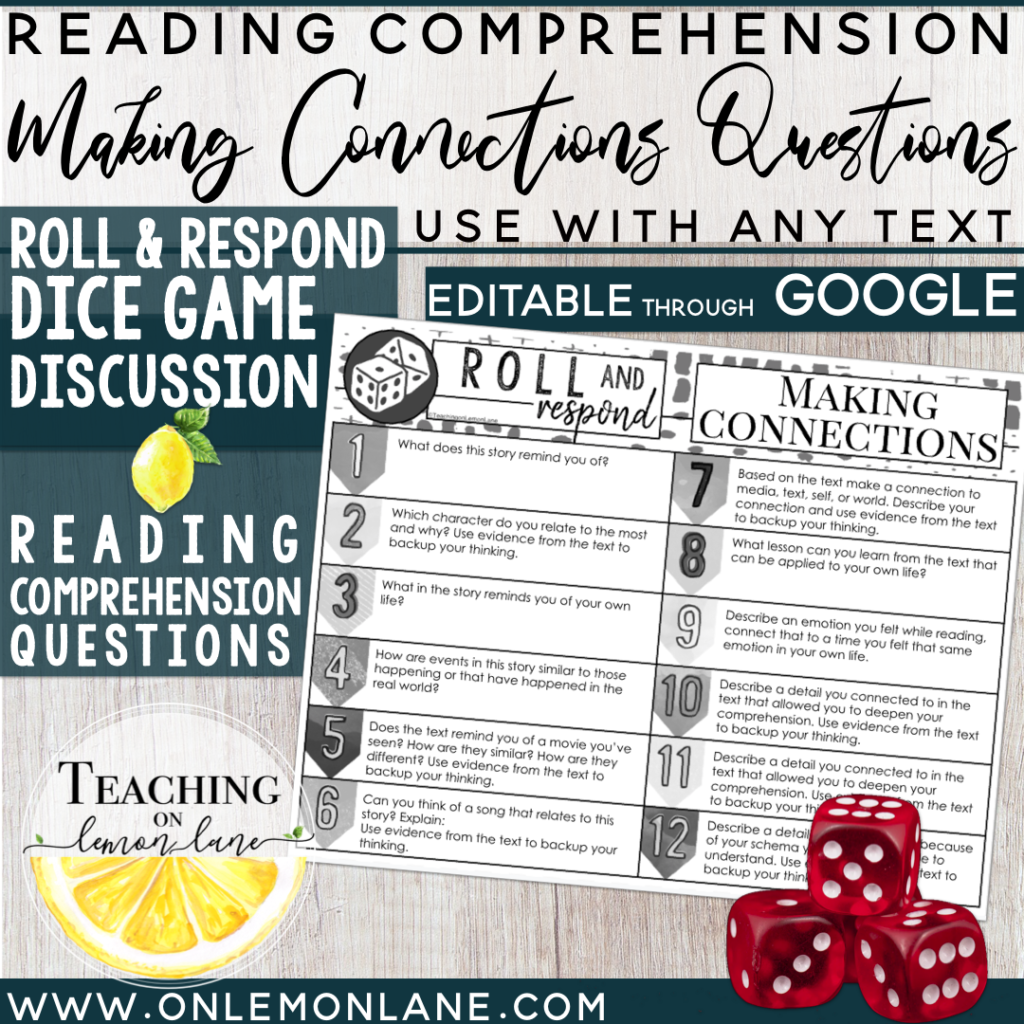
CLICK HERE TO DOWNLOAD FREEBIE
How to Get MORE Out of Literature Circles with Weekly Assignments FREEBIE Included:
When I first began Literature Circles in my classroom, students were responsible to read the assigned reading, as well as write a short summary of what they had read, and write a letter to me discussing what they had read explaining which active reading strategies they had used. This worked well and was effective… However, repeated over time I felt like the assignment became more of a hindrance, and got in the way of the students really loving what they were reading.
To add a little zest to the required assignments I came up with Strategy Focused Bookmarks and Literature Circle Role Bookmarks that the students really loved. Each week the students would receive a new bookmark. The beauty of the bookmark is that the group’s reading assignment and due-date were written right at the top, and the assignment for the week was literally completing the bookmark itself.
Keep Reading to Download my Making Connections Focused Bookmark for FREE
Each Bookmark is strategy focused, making it easy for me to plan what to teach and focus on for the week. It also gives students a skill to think about, practice, and apply while completing their independent literature circle reading. My whole philosophy of literature circles… in practice.
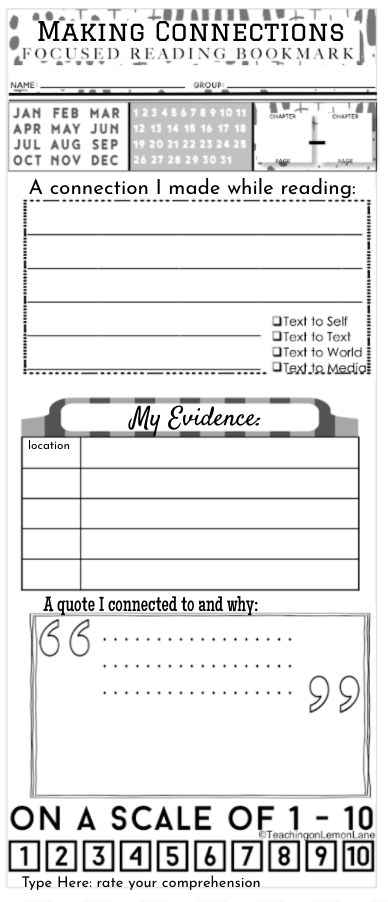
These Bookmarks are editable through your Google Drive and pieces can be moved around to completely customize the bookmark to your classroom’s needs. I include suggested questions you can use or switch out with the original questions I included. Each Bookmark comes with two layouts, one meant for the front and the other for the back. I print the bookmarks double-sided.
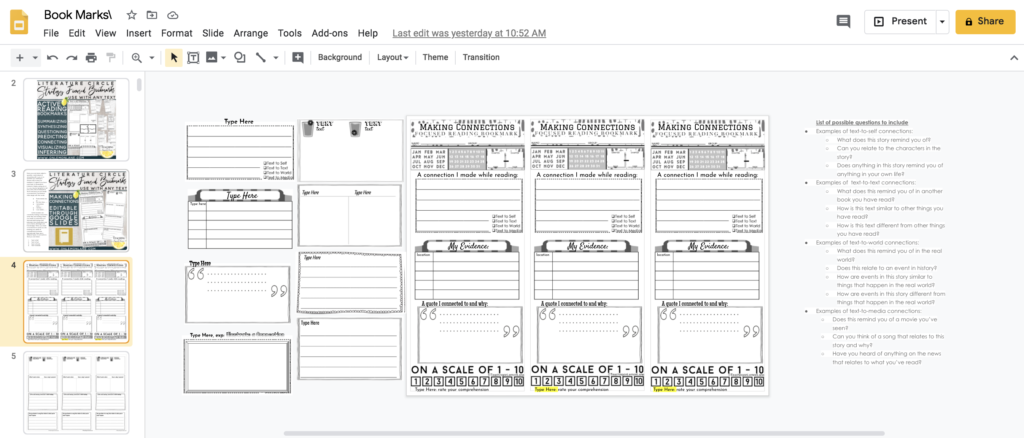
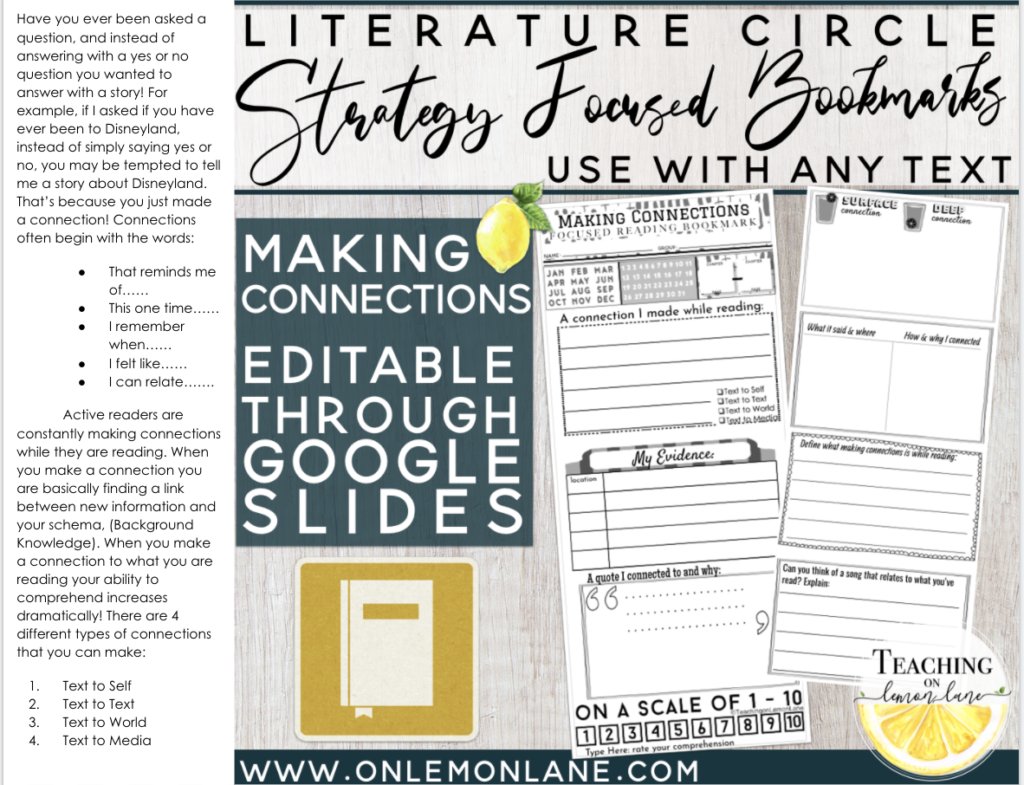 With each bookmark, I also include a cover page that includes an explanation and description of how I teach the Active Reading Strategy in my classroom. Use it word for word, or a starting point for how you discuss the weekly strategy with your students. See the image above as an example! Because these were created for Google Drive, you are able to edit the text to your own needs and can save the file to be used year after year!
With each bookmark, I also include a cover page that includes an explanation and description of how I teach the Active Reading Strategy in my classroom. Use it word for word, or a starting point for how you discuss the weekly strategy with your students. See the image above as an example! Because these were created for Google Drive, you are able to edit the text to your own needs and can save the file to be used year after year!
Try out my Making Connections Strategy Focused Bookmarks for FREE *** In order to access the download, you must be logged in. Not a member? Not a problem! Sign-up is FAST, FREE and Easy-Peasy Lemon Squeezy! Click here to become a member!
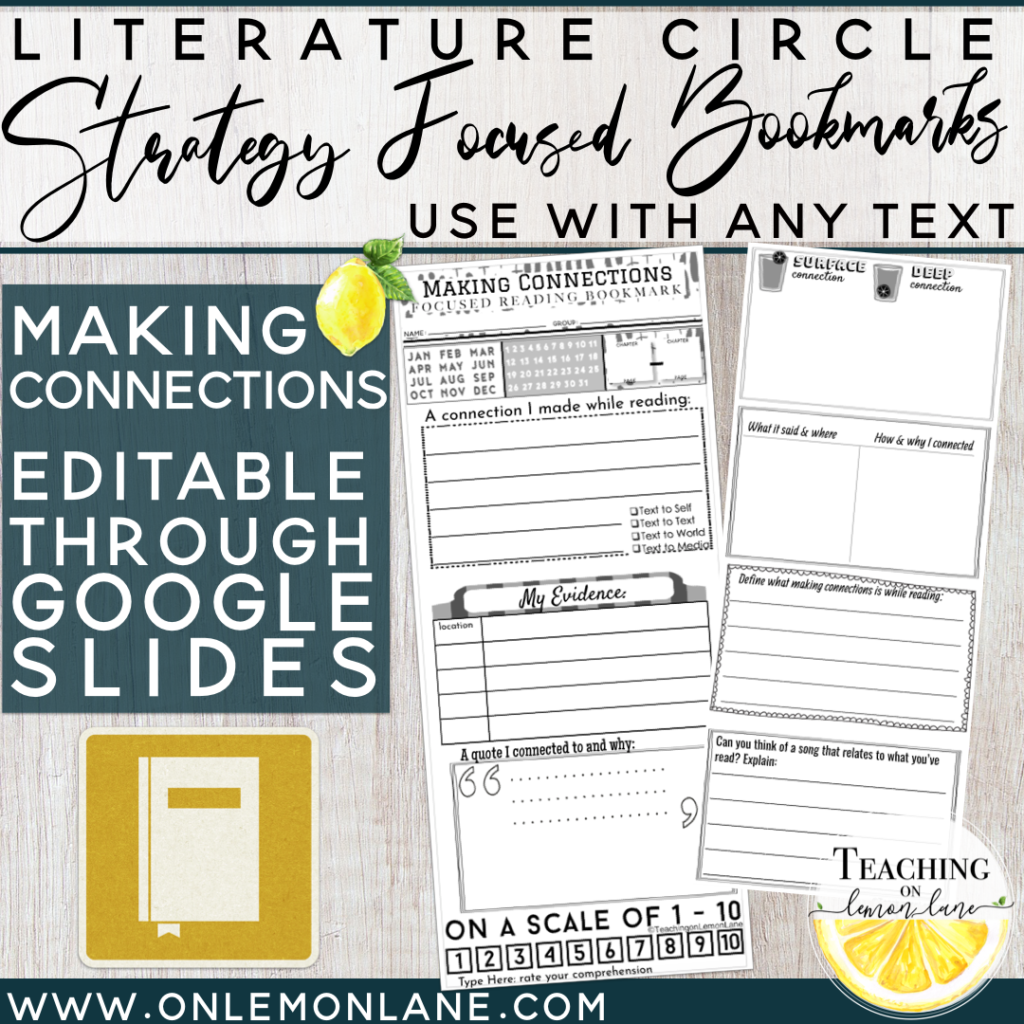
CLICK HERE TO DOWNLOAD FREEBIE
Strategy Focused Reading Response Pages Perfect for Distance Learning & Google Classroom
These strategy Focused Reading Response Pages were created based off of my Literature Circle Bookmark templates. The Strategy Focused Bookmarks mentioned above were created to be used as a hard copy, however, with today’s circumstances and capabilities I recognized the need for a digital response page. Perfect for Google Classroom, Distance Learning, or adapting to a modified school schedule.
Despite being created with distant learning in mind, I’ve also included a print and go version. Both versions can be edited to your needs through Google Slides. To Assign on Google Classroom. Every Bookmark includes the full page version of the student response pages. You can also purchase the response page separately. For every Strategy Focused Bookmark, I’ve created, there is an accompanying Roll and Respond page, as well as a Single Reading Response page perfect for Distance Learning, or assigning through Google Classroom.
Try out my Making Connections Strategy Focused Reading Response Page for FREE *** In order to access the download, you must be logged in. Not a member? Not a problem! Sign-up is FAST, FREE and Easy-Peasy Lemon Squeezy! Click here to become a member!
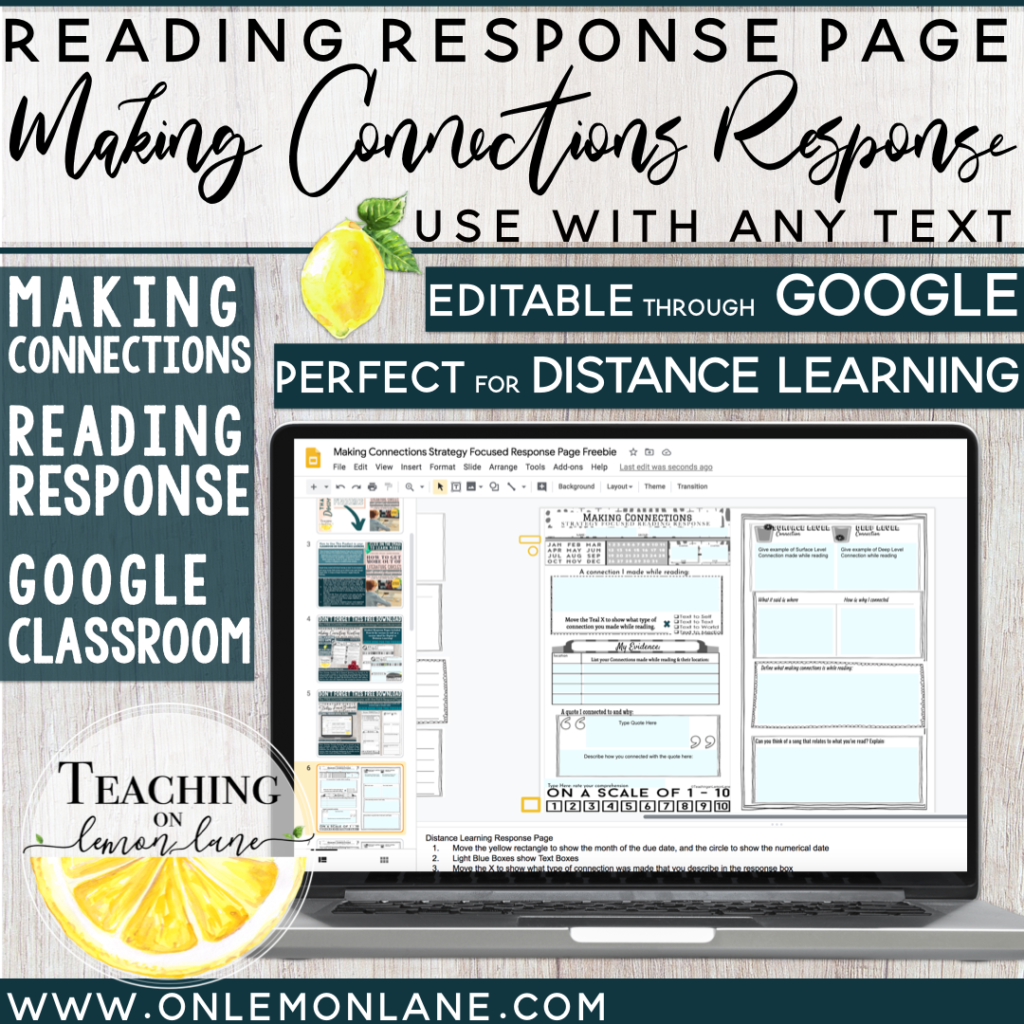
CLICK HERE TO DOWNLOAD FREEBIE
Learn More:
Related Blog Posts and Products
Save BIG and BUNDLE:
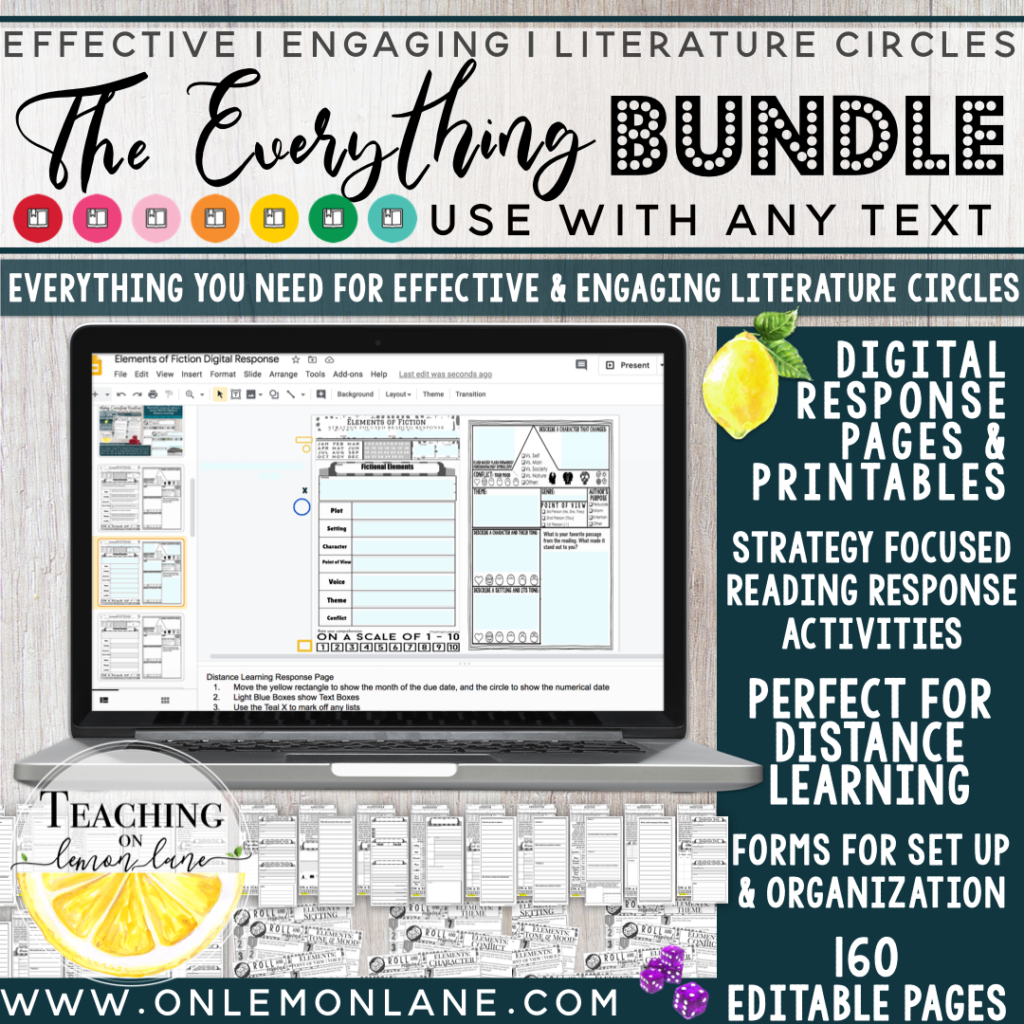
The EVERYTHING Bundle: Best Value
Click Here to Purchase on Teachers Pay Teachers
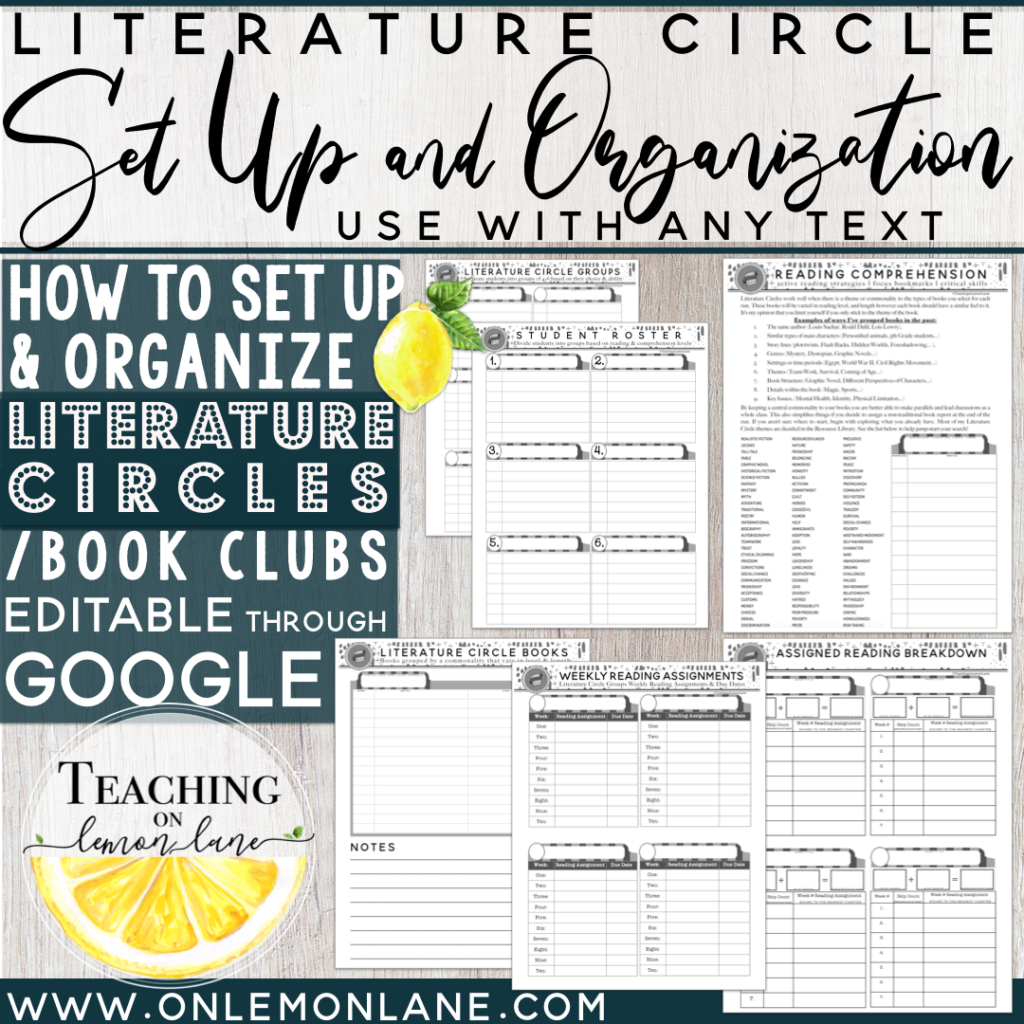
Literature Circle | Book Club: Set Up & Organization Forms
Click Here to Purchase on Teachers Pay Teachers
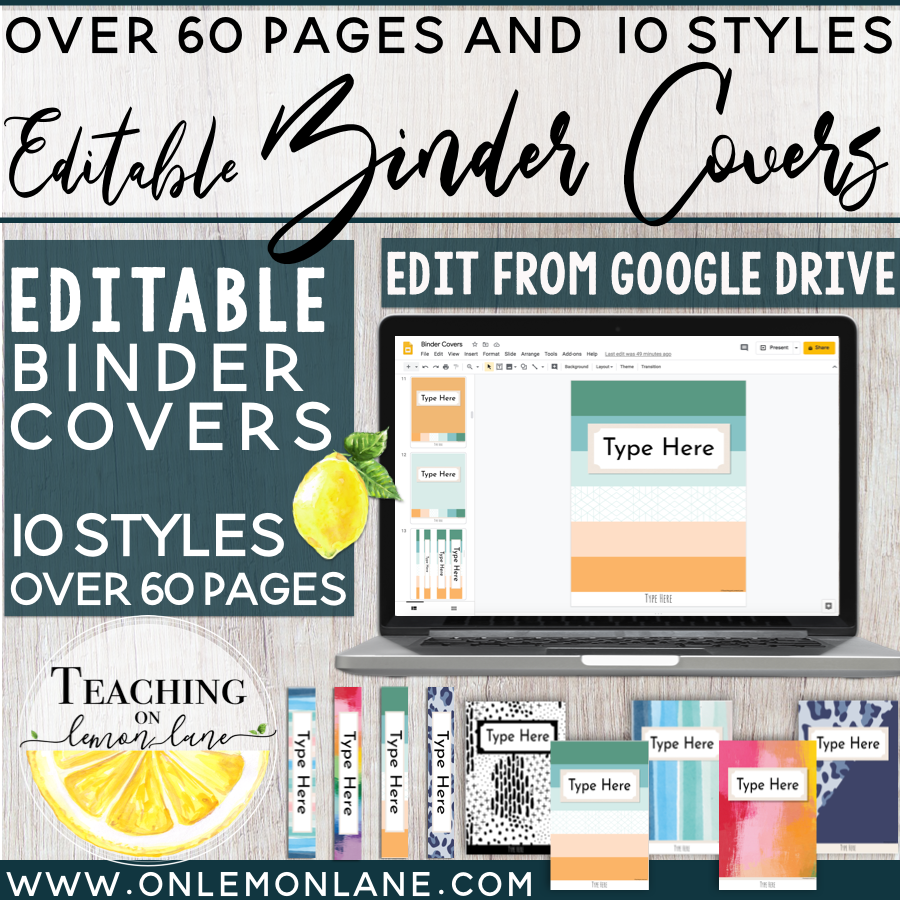
Editable Binder Cover Bundle 10 different Styles, over 60 pages
Click Here to Purchase on Teachers Pay Teachers
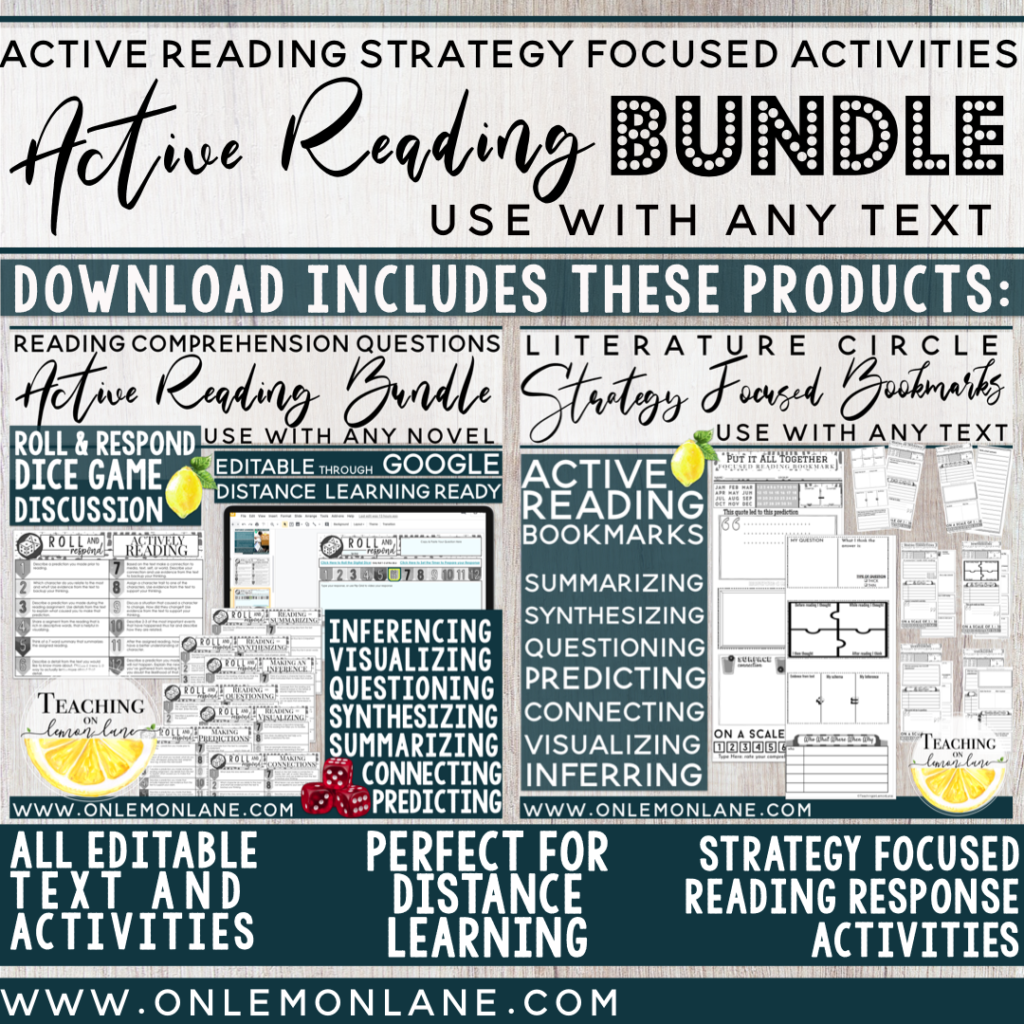
Active Reading Bundle: All Roll & Respond and Strategy Focused Bookmarks & Digital Activities
Click Here to Purchase on Teachers Pay Teachers
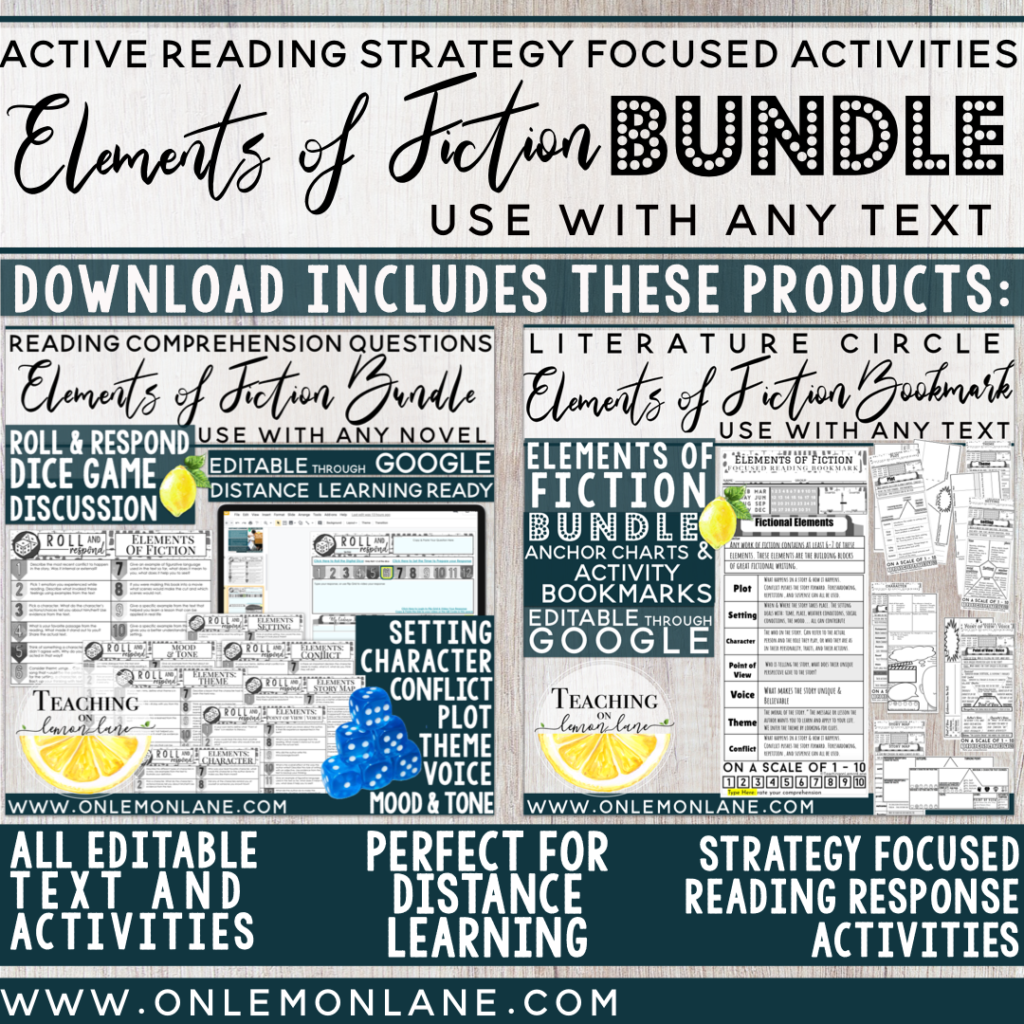
Elements of Fiction Bundle: All Roll & Respond and Strategy Focused Bookmarks & Digital Activities
Click Here to Purchase on Teachers Pay Teachers
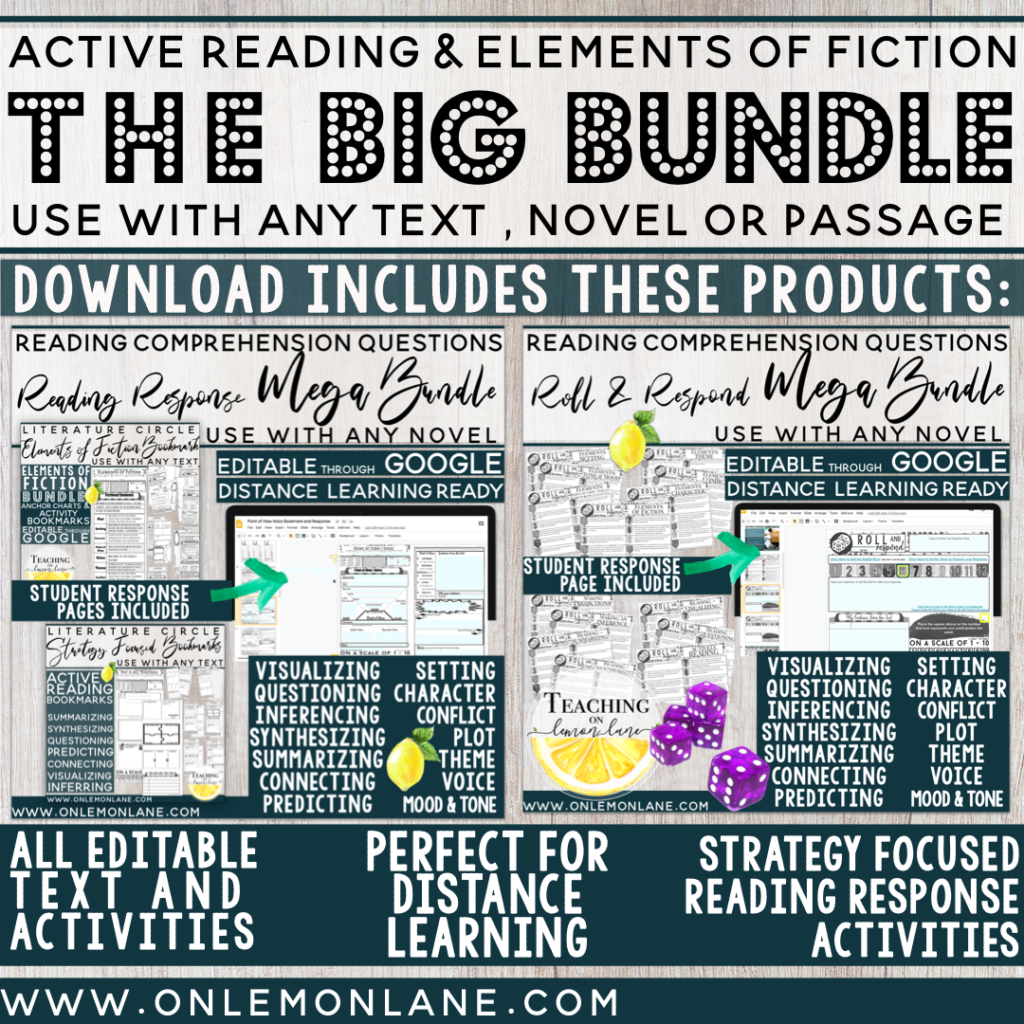
The BIG BUNDLE: All Roll & Responds and Strategy Focused Bookmarks and Digital Activities
Click Here to Purchase on Teachers Pay Teachers
Click Here to Purchase Literature Circle Roles + Reading Response Digital Activity
Explore Available Products & Bundles
- Roll a Dice Discussion Starters
- Literature Circle Roles and Responsibilities
- Literature Circle Binder Resources
- Planning Sheets & Graphic Organizers
- Strategy Focused Bookmarks & Digital Reading Activities
Stay in the loop, let’s connect!

To stay up-to-date on new blog posts, freebies, exclusive promo codes, and sales… Join the Teaching on Lemon Lane Community! Pick any or all of the following to stay in the loop of all things Teaching on Lemon Lane.
- Follow @TeachingonlemonLane on Instagram
- Like Teaching on Lemon Lane on Facebook
- Join our exclusive Teaching on Lemon Lane Facebook Group
- Sign-Up for our Monthly Newsletter: No Spam, only make your life easy-peasy, lemon-squeezy goodness… Promise.
If you enjoyed this PLEASE SHARE! Sharing on Pinterest, Facebook, or tagging on Instagram is a simple, yet wonderful way to support the efforts of Teaching on Lemon Lane!
